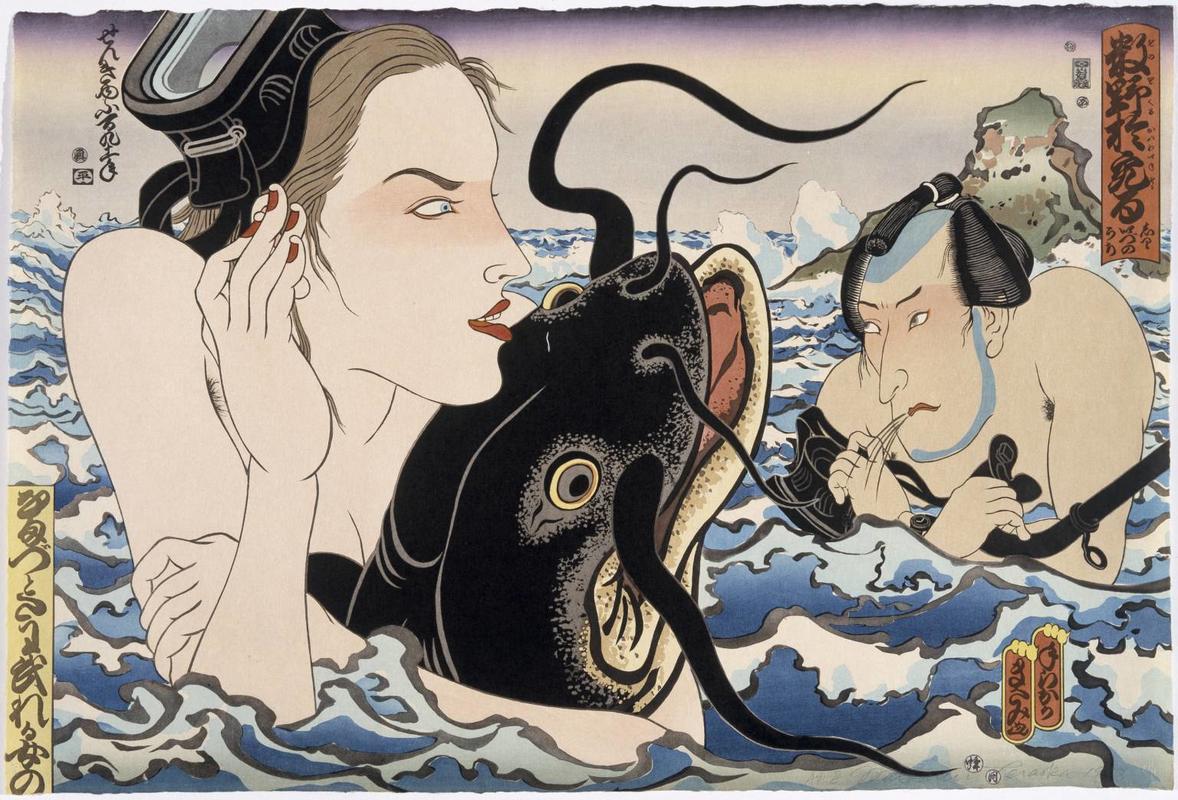Masami Teraoka was all about the merging of East and West art styles.
Hence this painting that imitates ukiyo-e, a genre of Japanese woodblock print popular from the 17th though 19th centuries, with all the vibes of a Roy Lichtenstein comic painting. The colliding of traditional Japanese art with American Pop art seems like it would go together like a fish and a bicycle, but it resulted in the Hawaii Snorkel Series, four paintings depicting sexy ladies and voyeuristic men that made waves in the art world.
Teraoka creates art to talk about social issues. He explains his own painting, “The middle-aged Samurai of Catfish Envy could represent traditional Japanese male chauvinistic thinking. He is astounded by the Western woman who is cuddling a catfish in front of him. The way she caresses the big head of the catfish could imply how much the American people love animals but also could show how openly they can express their affections in public, something not culturally acceptable in Japan.” American do have a tendency to treat their pets like royalty, but the look in the old man’s eyes and the phallic shape of the catfish’s head def hint at sexual undertones.
While creating these pieces Teraoka was under the mentoring eye of Kenneth E. Tyler, a master printmaker who brought artists such as Robert Rauschenberg, David Hockney, Helen Frankenthaler and Jasper Johns into his workshops. Needless to say, Teraoka was in good company with Ken Tyler and nothing would block them from greatness (unavoidable pun...so sorry).















He isn't an old man! That's what you said here: "but the look in the old man’s eyes and the phallic shape of the catfish’s head def hint at sexual undertones".
Yes, there are sexual undertones, but you need to think more carefully about Teroaka's own description of the work. He is contrasting Japan and the modernity of America. He exaggerates stylistically traditional Japan by his choice of medium (evoking ukiyo-e) and likewise with the man in the painting.
The man has no grey hair. Rather, his hair is Edo era (or before! maybe Daimyo or shogun?) which is especially incongruous in the ocean and juxtaposed with blonde white scuba girl. You are the art history expert! I am merely an ignorant statistician.